Ask someone south of the border for their thoughts on Scottish cuisine and they’ll inevitably offer up thoughts of two Gaelic gastronomic inventions: haggis and deep-fried Mars bars.
Despite the wealth of produce available – and exported – from the country, Scottish fare has struggled to shake its tartan-clad clichés
Despite the wealth of produce available – and exported – from the country, Scottish fare has struggled to shake its tartan-clad clichés. Take a table in London and you’ll find Orkney scallops, Isle of Mull oysters, highland venison and Outer Hebridean whisky on restaurant menus, while bonnie chefs like Quo Vadis’s charismatic Jeremy Lee and industry darling Adam Handling lead the capital’s kitchens. But in the depths of Braveheart country, the restaurant scene is now freshening up as a bevvy of young chefs make the most of Scotland’s generous natural larder to serve Michelin-worthy meals.
Don’t think this is fine dining of the silent, white tableclothed type, though. Somewhere between the seriousness of the late, lauded Andrew Fairlie’s outposts, and the sweet, toffee-ed ooze of a chippy’s deep-fried offering, the new Scots dining style is fresh, informal and short of pretence.
I wondered why it’s taken so long for the nation’s restaurant scene to shake itself up as I was scooping up delicate slivers of spoot tucked between petit pois and doused in an elderflower jus. The spoots – razor clams to those born behind Hadrian’s Wall – are the first course of 11 on a tasting menu at Heron restaurant in Edinburgh’s Leith neighbourhood. Opened in 2021, this informal dining spot is spearheading the city’s relaxed dining revolution. In March, it tucked a Michelin star under its wing.
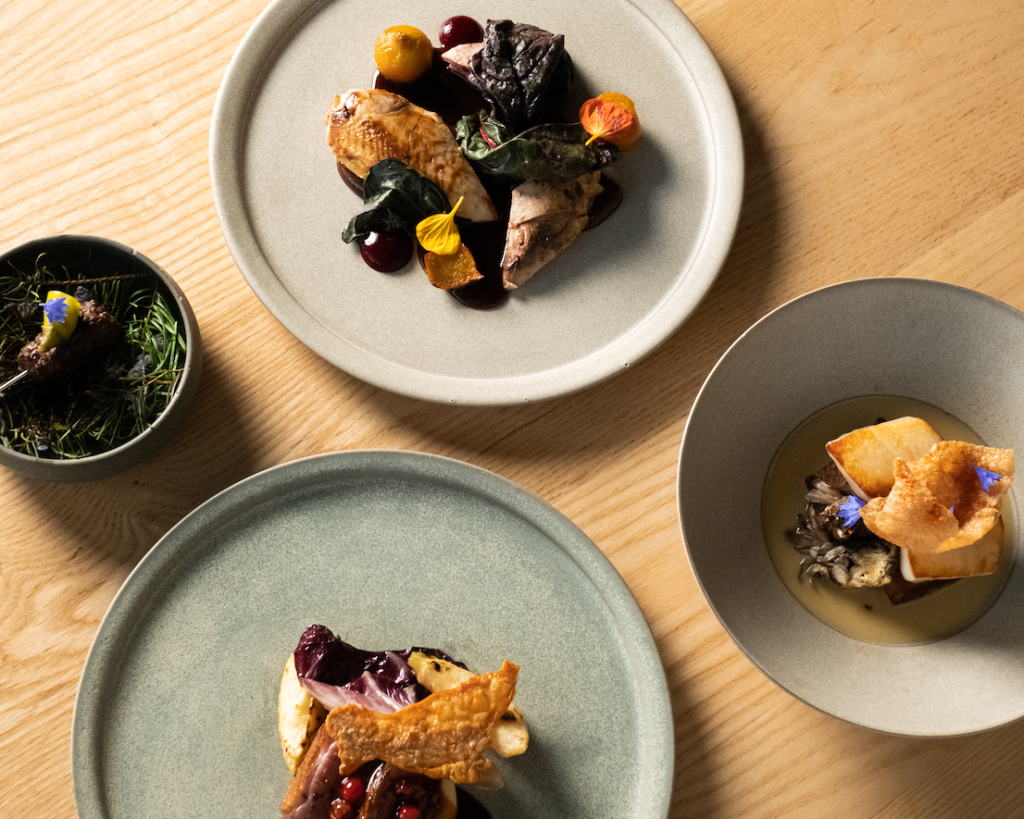
Baby-faced youth sit at the heart of this Scottish food reimagining. The chefs behind Heron’s kitchen, Tomás Gormely and Sam Yorke, are 28 and 25 respectively. The spoots are one obvious example of the team’s playful use of Scots produce. After the shellfish, a soft, white crab tartlet hidden beneath lovage, apple and almond arrives; then a buttermilk-fried veal sweetbread topped with a generous spoonful of caviar. Bread is served with a delicious plop of brown crab meat butter. Later, I’m given woody girolles nestled beside quail, then a fat Orkney scallop quivering beneath a sliver of pork neck. It’s an approachable tasting menu, both in ambition and cost, coming in at a reasonable £99. In the dining area, white tablecloths have been swapped for blonde wood tables.
Elsewhere in the city, Yorke and Gormley have been busy. Skua, in the village-like Stockbridge neighbourhood, is a relaxed replication of Heron’s success. The candlelit, black-painted basement wine bar opened this year, serving small plates that dazzle in their ambition. If you’re only eating out once in the city, make it here. Perthshire strawberries dance with unripe tomato in a fresh salad, there’s a refreshing grapefruit sea bass ceviche, plus fried chicken doused in a fiery peach hot sauce. For drinks, turn to the blackboard of daily-changing grapes by the glass.
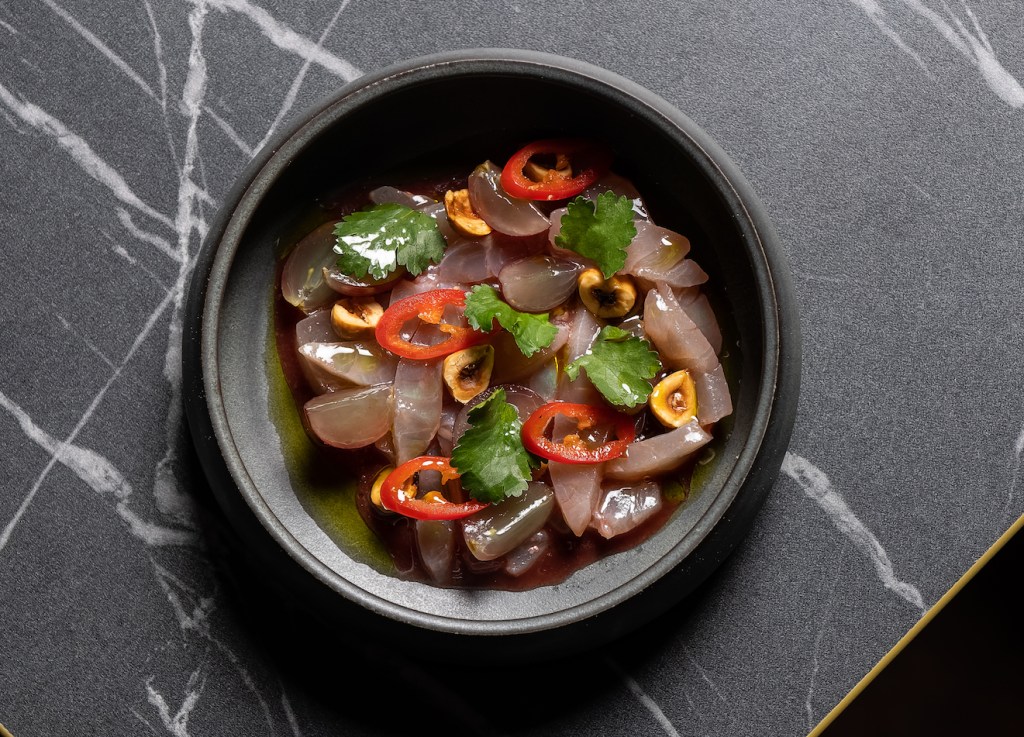
Down the road, the duo behind Eórna are ramping up on experimentation. Open for an intimate dinner service only, and – in keeping with the new local bounty ethos – serving a menu of seasonal produce sourced from Scotland, the restaurant runs with a ‘get what you’re given’ ethos. ‘You just have to trust us,’ sommelier Glen Montgomery tells me from the other side of a counter that dissects the one-room kitchen and dining space. Montgomery is one of two staff at the restaurant, which opened in May. Chef Brian Grigor is his kitchen counterpart, working under the gaze of the 12 diners each night. I’m given a slender fillet of Belhaven smoked salmon, served with ‘salty fingers’ seaweed, then a deeply blushed loin of Aberdeenshire lamb beside a wedge of grilled lettuce.
Chat in the city suggests that a recent upsurge in tourism can be traced to the small screen. The cult TV show Outlander careens from Edinburgh to the Highlands and back, fuelling what the National Trust for Scotland has labelled ‘the Outlander effect’ as dusty backwaters find themselves transformed by a rush of visitors. The ever-dour whisky industry is having its mash turned over by experimental teams at Holyrood Distillery, Arbikie Distillery near Dundee and the budding B-corp team behind Nc’nean in the West Highlands.
Hotels, too, are in on the game. On St Andrews Square in Edinburgh’s centre, the opening of Gleneagles Townhouse within the former Royal Bank of Scotland building in June last year created an urban focal point for the city’s social scene. Food, again, takes centre stage. The glass-domed Spence restaurant – a hallucination of pastel pinks, greens, tassels, chandeliers and complex plasterwork – serves an all-day brasserie menu that includes sweet West Coast langoustines, crab crumpets and Tweed Valley fillet steaks.
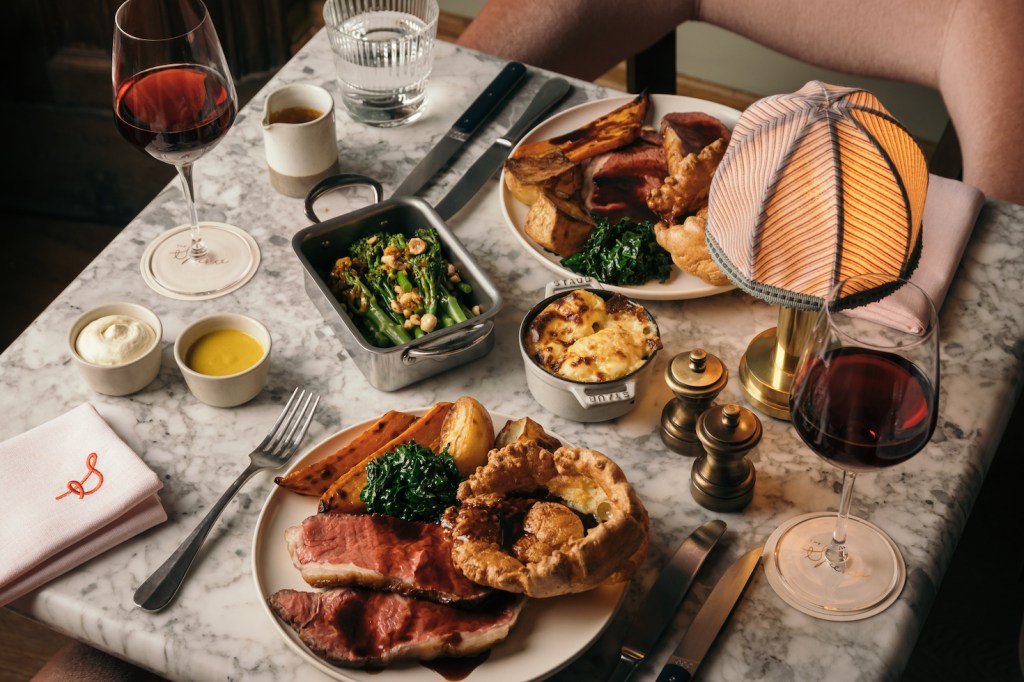
It’s all rather playful – a joyful take on dining (and dining rooms). It’s unexpected, too, in a nation famed for its Presbyterian disposition. Case in point: the third Edinburgh restaurant from chef Stuart Ralston (following Aizle and Noto). At Tipo, the menu seems set to tickle, rather than wow. Located on Edinburgh’s Hanover Street, conviviality is put front and centre at Ralston’s relaxed Italian-influenced spot. A sharing plates menu serves dishes such as savoury zeppole, a deep-fried squiggle of potato normally served sweet in Italy, which arrives heaped beneath shavings of Castelmagno cheese. Mountainous, creamy piles of pappardelle crab follow, while the dessert is a seasonally flavoured soft serve: vanilla and strawberry doused in a nostalgic, syrupy sauce.
The growing trend for relaxed fine dining isn’t unique to Edinburgh, either. Gastronomic tasting menus are turning up in the middle of nowhere. On the shores of Loch Broom, the recently refurbished Dipping Lugger in Ullapool plates modern Highland fare. In the Cairngorms, beneath the picturesque eaves of Killiecrankie House, a single set menu each night celebrates Scottish produce – Highland wagyu, included. Both restaurants also have rooms to boot, offering sophisticated, storied dinners, and a bed only a staircase away after a nightcap.
Glasgow has ambitions, too. Jump on a 40-minute ScotRail ride from the Scottish capital and you’ll find Celentano’s, a convivial dining space that’s a transplant for an Italian osteria just around the corner from the vast fermentation vats of the Tennent’s brewery site. South African by birth, Parker left London and his role as executive chef under restaurateur Robin Gill to launch Celentano’s with his Glaswegian wife and co-founder, Anna.

Ingredients for the lunch and dinner menus are supplied by local producers or plucked from the restaurant garden. Homemade pasta plates share the menu with clever takes on classic dishes. The deconstructed affogato dessert pairs malted barley gelato and chocolate mousse with cold brew coffee. The stracciatella starter – a wobble of creamy delight surrounded by soft pea puree, glistening sugar snap peas and a grapefruit and nasturtium salad – is about as far from a deep-fried Mars bar as it gets. The same can’t be said for the lasagne fritti bites, an unctuous mouthful of battered porcini mushroom and Scottish Corra Linn cheese that seems to have the same moreish ideology behind its creation as the nation’s famous artery clogger.
Travel from London to Edinburgh with LNER from £50 for a single journey. For more information about Scotland, see Visit Scotland.

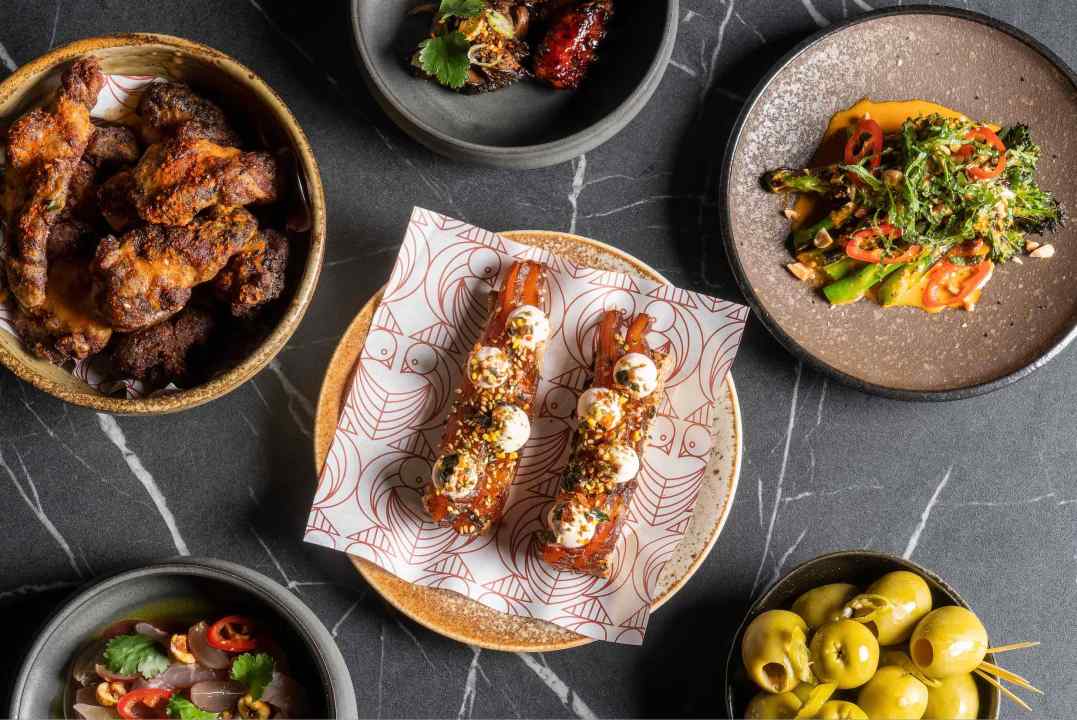
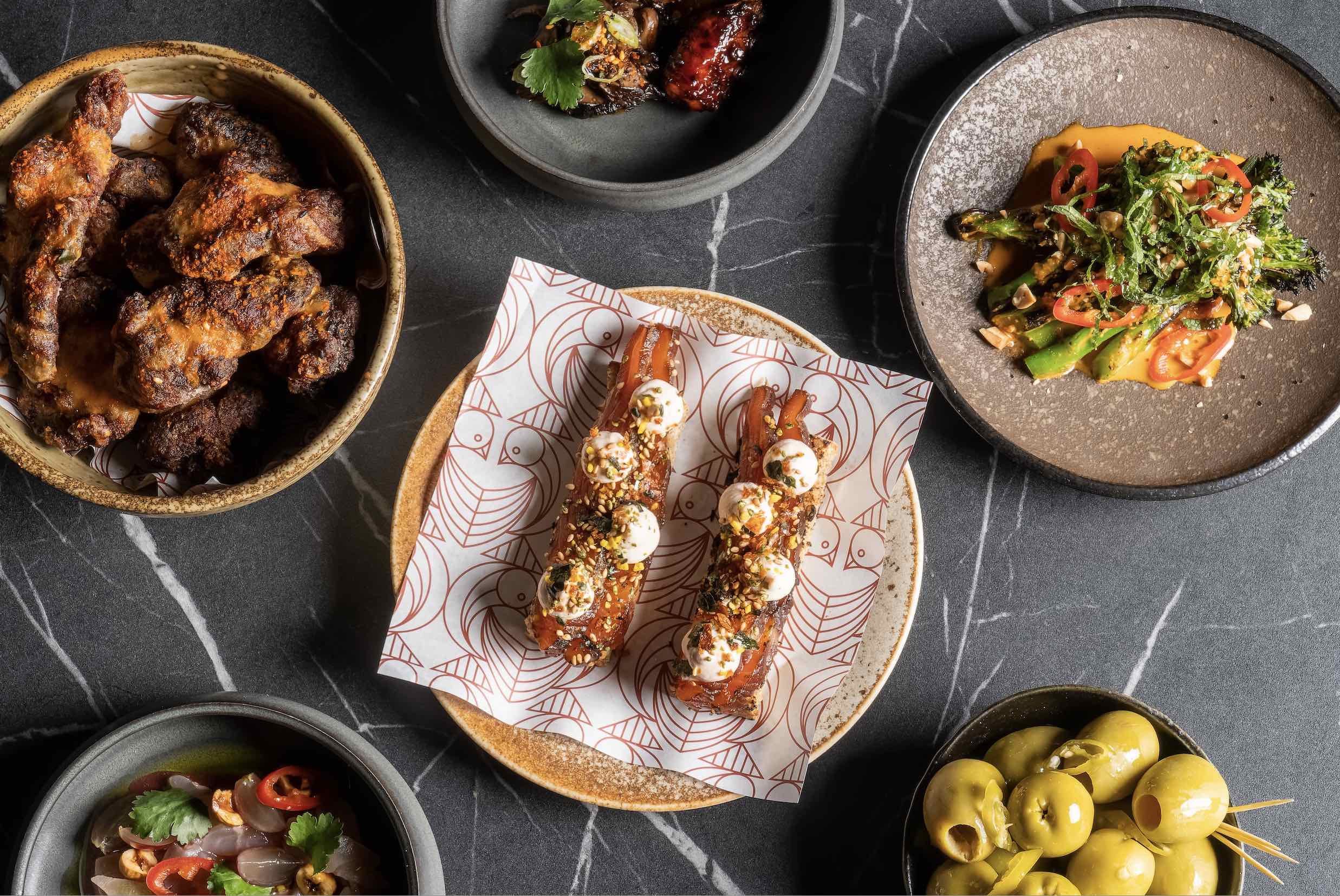




Comments